Yes, hard anodized cookware is safe for daily cooking in 2025 when used properly. Many people wonder, is hard anodized cookware safe? The answer is yes, because it features a non-stick surface that prevents food from sticking and does not react with your food. The anodized layer acts as a strong shield, protecting your meals from harmful chemicals. Experts confirm that hard anodized cookware does not contain any harmful substances. This is why many choose hard anodized cookware for its durability, safety, and long-lasting performance.
Key Takeaways
- Hard anodized cookware is safe to use every day. Its hard surface keeps aluminum away from your food. The anodized layer makes pans strong and hard to scratch. It also stops rust and corrosion. You can cook foods like tomatoes without worry. Metal will not get into your food or change the taste. Use low or medium heat when cooking. Do not use harsh cleaners or put pans in the dishwasher. This helps your pans last longer. Use wood, silicone, or plastic tools to protect the nonstick surface. These tools help stop scratches. If your pan has deep scratches, peeling, or worn spots, replace it. This keeps your cooking safe. Hard anodized pans heat food evenly. They are lighter than cast iron pans. Many are safe to use in the oven. This makes them good for many types of cooking. Look for labels like ‘PFOA-free’ or ‘PFAS-free.’ These labels mean the nonstick coating does not have harmful chemicals.
Table of Contents
What Is Hard-Anodized Cookware
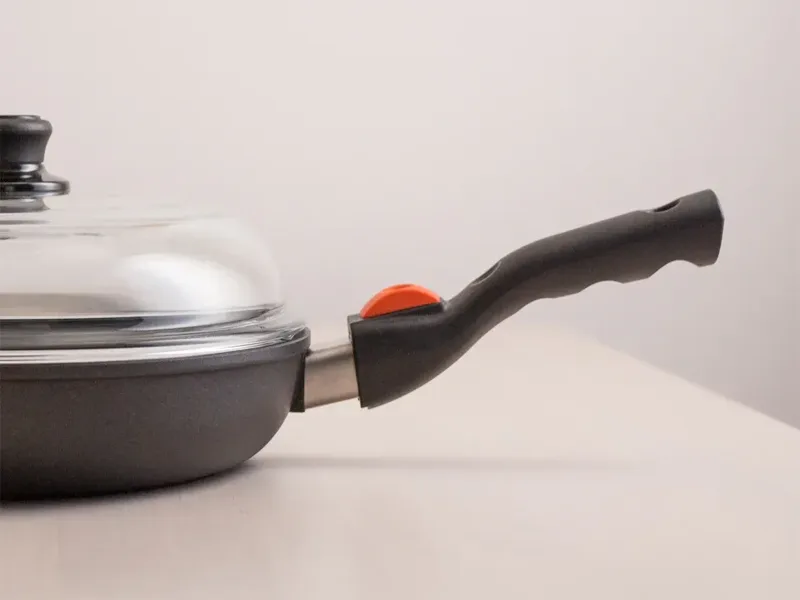
Hard-Anodized Aluminum Explained
You might ask how hard-anodized cookware is different. It starts with regular aluminum, which is a light metal. Aluminum spreads heat very well. Makers use a process called anodization on the aluminum. This process makes the surface much harder and stronger. The cookware does not scratch or dent easily. It also does not rust or corrode. Hard-anodized aluminum does not react with acidic foods. Your food tastes the way it should.
Anodization Process
Anodization gives hard-anodized cookware its special features. First, the aluminum is cleaned. Then it goes into an acid bath. An electric current runs through the metal. This creates a thick, tough oxide layer on top. The layer can be up to 150 microns thick. This is much thicker than the natural layer on regular aluminum. The new surface sticks tightly to the metal. It does not wear out or rust easily. The process also seals the aluminum. This means aluminum will not get into your food. You can see the differences in the table below:
| Feature | Regular Aluminum Cookware | Hard Anodized Cookware |
|---|---|---|
| Manufacturing Process | Raw aluminum with a thin natural oxide layer | Electrochemical anodizing in acid bath forming a thick, hard oxide layer |
| Oxide Layer Thickness | Very thin natural oxide layer | Thick oxide layer (13 to 150 microns) |
| Surface Hardness | Low, prone to scratches and dents | High hardness, often compared to sapphire, very scratch-resistant |
| Corrosion Resistance | Moderate, oxide layer is thin and easily damaged | Excellent, thick oxide layer protects against corrosion |
| Heat Resistance | Can warp under high heat | Can withstand high temperatures without warping |
| Durability | Less durable, prone to wear and deformation | Highly durable, wear-resistant, and long-lasting |
| Aesthetic Options | Minimal, natural silver color | Can be dyed for color, though less common |
| Use of Metal Utensils | Not recommended due to surface damage | Safe to use metal utensils without damage |
Key Features
Hard-anodized aluminum cookware has many good points. Here are some of the main features:
- This cookware is very strong and does not scratch or dent.
- The thick anodized layer keeps aluminum from touching your food.
- It spreads heat evenly, so food cooks the same all over.
- Hard-anodized aluminum is light, so it is easy to lift.
- Many pieces can go in the oven and work for many cooking styles.
- The surface is smooth, so it is easy to clean and does not stain.
- You can use metal utensils with most hard-anodized cookware.
- The anodized surface lets nonstick coatings last longer and work better.
Tip: Good anodized aluminum cookware can last a long time if you care for it. Do not use harsh cleaners or put it in the dishwasher. This keeps the anodized layer strong.
Hard-anodized aluminum cookware is safe, strong, and works well for cooking. The anodized surface stops aluminum from getting into your food. The cookware does not have harmful chemicals. You can use hard-anodized cookware every day. It will last through lots of cooking and cleaning.
Is Hard Anodized Cookware Safe
Protective Layer
When you think about safety, look at the protective layer first. The anodized layer forms when makers use electricity and acid on aluminum. This makes a thick, hard surface that sticks to the metal. It acts like a shield and stops food from touching the aluminum. You can cook tomato sauce or lemon chicken without worry. Acidic foods will not allow aluminum to get into your meal.
The anodized coating is not just a thin cover. It becomes part of the pan and is very tough. It does not chip or peel easily. The oxide layer does not dissolve in most cooking. It stays strong even if you use the pan every day. Scientists say this layer keeps food away from the aluminum. This is true even with acidic or basic foods. If you keep the surface nice, you will not get aluminum in your food. But if you scratch or damage it, the protection gets weaker. Always use the right utensils and do not scrub too hard. This helps keep your cookware safe.
Nonstick and Non-Reactive Surface
Hard-anodized cookware is special because it is nonstick and non-reactive. Food slides off easily, so you can use less oil or butter. This makes it a good choice for healthy meals. The nonstick coating also makes cleaning up fast.
The non-reactive surface means your food tastes right. Acidic foods like tomatoes do not react with the pan. This keeps your meals safe and pure. Many people like hard-anodized cookware for this reason. It does not change the color or taste of food. The safety comes from the stable, non-reactive surface.
You might worry about chemicals in nonstick pans. Modern hard-anodized cookware does not have PFAS, PFOA, lead, or cadmium. These bad chemicals are not in safe cookware today. You can trust that your hard-anodized pans are free from these things.
Note: Always check the label when you buy new cookware. Look for “PFOA-free” and “lead-free” to get the safest pans.
Durability and Corrosion Resistance
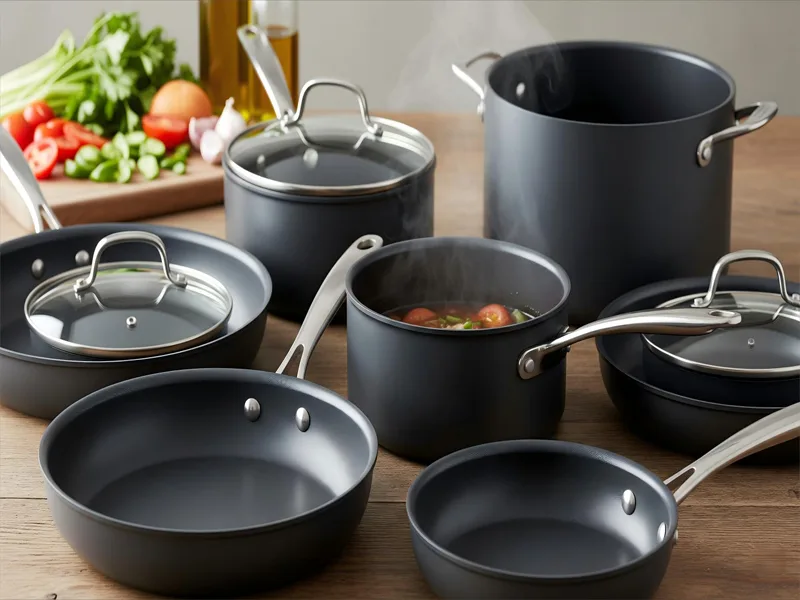
Hard-anodized aluminum cookware is strong and lasts a long time. The anodized layer makes the surface much harder than regular aluminum. You can use metal utensils with most pans and not scratching them. The cookware does not dent, chip, or warp, even with heavy use.
The oxide layer protects the pan from rust and damage. This means your cookware will last for years and stay safe. Anodized cookware is used in food factories because it is tough and keeps food safe.
Scientists and experts agree that hard-anodized cookware is safe. No studies show health problems from using it. Some experts say to be careful with all aluminum, but this is just to be safe. If you take care of your pans and do not damage the surface, you can trust hard-anodized cookware for daily use.
Tip: Replace your hard-anodized cookware if you see deep scratches or if the surface wears off. This keeps your food safe and your pans working well.
Health Concerns
Aluminum Leaching
You might wonder if these pans let aluminum into food. This is a common worry for many people. The anodized aluminum process makes a hard, sealed layer. This layer stops aluminum from getting into your meals. Even when you cook foods like tomatoes or lemon, the layer works. Regular aluminum pans can let some metal into food. But anodized aluminum cookware is not the same. The special coating acts like a wall. You can use these pans every day and feel safe.
Note: The FDA and other health groups say these pans are safe. The sealed surface keeps your food free from extra metals.
Cancer and Alzheimer’s
Some people worry about aluminum and diseases like cancer or Alzheimer’s. These worries have been around for a long time. You may have heard that aluminum in pans could cause health problems. But experts have studied this for years. Big studies do not show a link between anodized aluminum cookware and Alzheimer’s. Most scientists now say the idea is a myth. Aluminum is found everywhere, but your body only takes in a tiny bit from pans.
- Groups like the Alzheimer’s Association do not list aluminum as a risk.
- The amount of aluminum from these pans is very low.
- If aluminum pans caused Alzheimer’s, many more people would have it.
Cancer experts also say these pans do not raise your cancer risk. The American Cancer Society and other experts agree these pans are safe. The hard coating on anodized aluminum keeps most metal out of your food. You can trust that using these pans will not make your cancer risk higher.
Chemical Safety
When you think about safety, you should also think about chemicals in pans. Some hard anodized aluminum pans have nonstick coatings made with PTFE. PTFE is a type of PFAS chemical. These chemicals can be bad if they break down at high heat or flake into food. Recent tests found PTFE and BPA-based coatings in some brands of these pans.
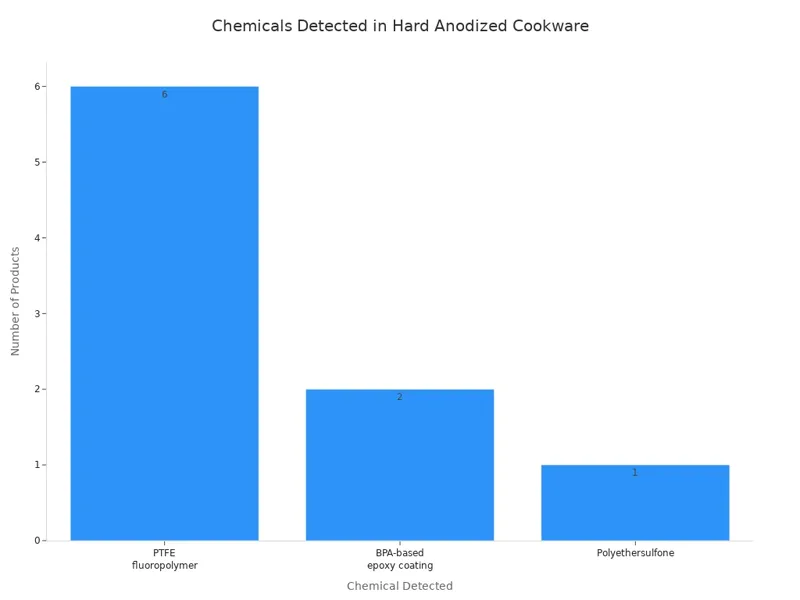
You should always look for labels that say “PFAS-free” or “third-party tested.” This helps you avoid unwanted chemicals. If you want to be extra safe, pick pans without extra coatings or choose stainless steel or cast iron. Always follow care instructions to keep your pans in good shape and lower safety worries.
Tip: If you see scratches or damage on your pans, get new ones. This keeps your food safe and your kitchen free from chemical risks.
Hard-Anodized Cookware vs Other Materials
Stainless Steel
Many kitchens have stainless steel pans. These pans are strong and last a long time. You can use them for searing, browning, or boiling food. Stainless steel does not rust or stain. It does not react with acidic foods, so your food tastes right. You can use metal utensils without worrying about damage. If you take care of them, these pans can last for many years.
But stainless steel pans do not have a nonstick surface. Food can stick, especially eggs or pancakes. You might need to use more oil or butter. Cleaning them can be harder. Stainless steel pans heat up slower than hard-anodized pans. If the base is thin, you might see hot spots.
Cast Iron
Cast iron pans are heavy and feel solid. You can fry, bake, or grill with them. Cast iron holds heat very well and keeps food warm. Many cooks like cast iron for crispy crusts and rich flavors. You can use it on the stove, in the oven, or over a campfire.
Cast iron needs special care. You must season it with oil to keep it nonstick and stop rust. If you wash it with soap or leave it wet, it can rust. Cast iron pans are heavy and hard to lift. They also take longer to heat up than hard-anodized pans. Acidic foods can remove the seasoning and change the taste.
Ceramic and Nonstick
Ceramic and nonstick pans are popular for easy cooking and cleaning. Ceramic pans have a mineral-based coating. Nonstick pans often use PTFE or similar coatings. Both types help food slide off with little or no oil. You can cook eggs, pancakes, and fish easily.
You might wonder how hard-anodized pans compare to ceramic and nonstick pans. Reports show all three types have great nonstick performance. The table below shows how they compare:
| Cookware Type | Example(s) | Nonstick Performance | Durability | Even Cooking | Induction Compatibility | Oven Safety | Additional Notes |
|---|---|---|---|---|---|---|---|
| Hard Anodized | Oxo Ceramic Professional Non-Stick pan | Very good nonstick durability and food release | Excellent durability, PTFE-free coating | Excellent | Yes | Up to 600°F | Handle stays cool; PTFE-free coating |
| Cuisinart GreenGourmet Hard Anodized set | Excellent nonstick food release | Good durability | Good | Yes | Up to 400°F | Lower oven-safe temp | |
| Ceramic Nonstick | Caraway Ceramic-Coated Non-Stick pan | Excellent nonstick food release | Durable, PTFE-free | Excellent | Yes | Not specified | Handle sturdy and cool |
| GreenPan Stanley Tucci Ceramic Nonstick | Excellent nonstick durability and food release | Best durability among ceramic pans | Excellent | Yes | Up to 600°F | High oven safety | |
| Figmint 12pc Ceramic Coated Set | Excellent nonstick food release | Good durability | Excellent | Yes | Up to 450°F | Middling handle sturdiness | |
| Traditional Nonstick | Swiss Diamond HD Nonstick | Excellent nonstick durability and food release | Outstanding durability after simulated years | Excellent | No | Not specified | Not induction compatible |
| Le Creuset Toughened Nonstick PRO | Very good nonstick durability and food release | Excellent durability | Excellent | Yes | Not specified | Induction compatible |
You can also look at the chart below for a quick view of nonstick performance:
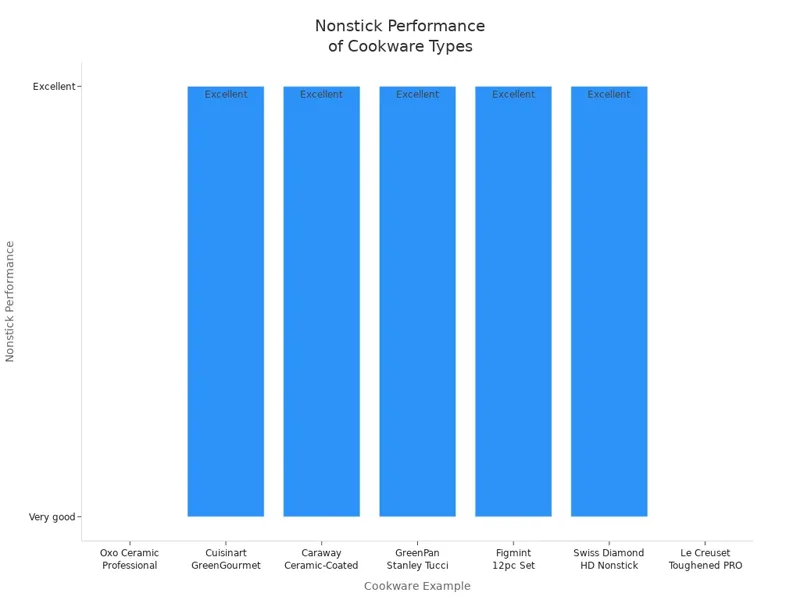
Hard-anodized pans have a tough, scratch-resistant surface. They last longer than most ceramic pans. You can use them at higher oven temperatures. Hard-anodized cookware spreads heat evenly, so food cooks the same everywhere. Ceramic and nonstick pans are good for gentle cooking, but may not last as long.
Tip: If you want a pan that is easy to clean, safe, and strong, hard-anodized cookware is a smart pick. You get nonstick cooking plus extra strength and safety.
Pros and Cons
When you choose cookware, you want to know the good and bad points. Hard-anodized pans have many strengths, but they also have some limits. Let’s look at both sides so you can make the best choice for your kitchen.
Pros of Hard-Anodized Cookware
- You get a tough surface. Hard-anodized pans resist scratches and dents better than most other types.
- The nonstick surface makes cooking and cleaning easy. You use less oil, so your meals can be healthier.
- Hard-anodized cookware heats up fast and spreads heat evenly. Your food cooks the same all over the pan.
- You do not need to worry about food reacting with the pan. The hard-anodized layer keeps your food safe and pure.
- Most hard-anodized pans are lighter than cast iron. You can lift and move them with less effort.
- Many brands make hard-anodized pans that work in the oven. You can start a dish on the stove and finish it in the oven.
- Hard-anodized cookware lasts a long time if you care for it. The surface stays strong through many uses.
Cons of Hard-Anodized Cookware
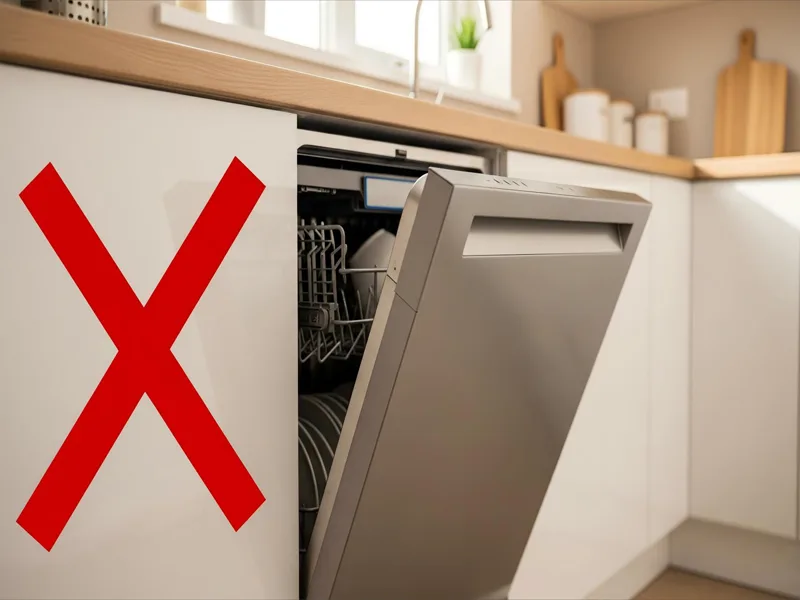
- You cannot use hard-anodized pans with induction cooktops unless the base has a special layer. Always check before you buy.
- Some hard-anodized pans have extra nonstick coatings. If these coatings get scratched, the pan may not be safe to use.
- Hard-anodized cookware costs more than regular aluminum or some nonstick pans. You pay for the extra strength and safety.
- You should not put hard-anodized pans in the dishwasher. The harsh soap and water can damage the surface.
- If you use metal utensils too roughly, you might scratch the hard-anodized layer. Always use care when cooking and cleaning.
Here is a quick table to help you compare:
| Feature | Hard-Anodized | Stainless Steel | Cast Iron | Ceramic/Nonstick |
|---|---|---|---|---|
| Nonstick | Yes | No | Needs seasoning | Yes |
| Durability | Very high | High | Very high | Medium |
| Weight | Light to medium | Medium | Heavy | Light |
| Oven Safe | Usually | Yes | Yes | Sometimes |
| Induction Compatible | Sometimes | Yes | Yes | Sometimes |
| Easy to Clean | Yes | No | No | Yes |
| Price | Medium to high | Medium to high | Low to medium | Low to medium |
Tip: If you want a pan that is easy to use, safe, and lasts a long time, hard-anodized cookware is a smart pick. Just remember to follow care tips to keep your pans in top shape.
Using Anodized Cookware Safely
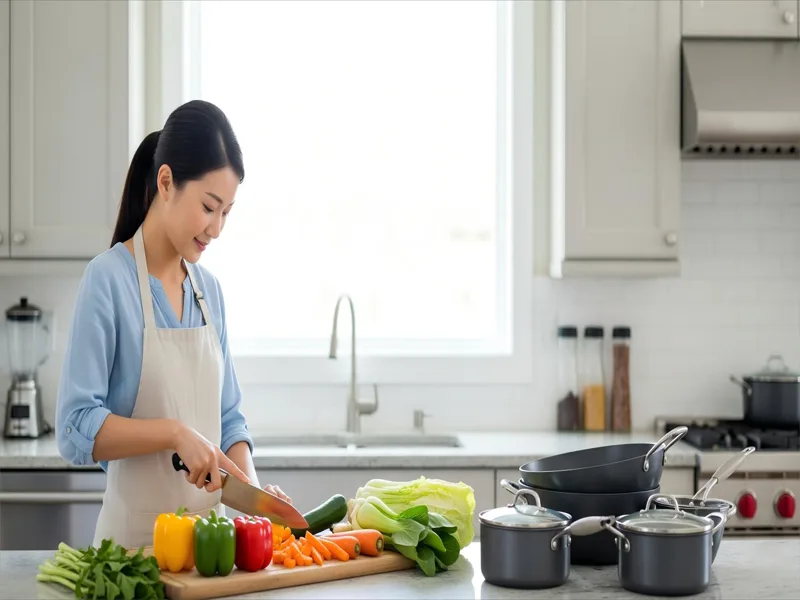
Daily Use Tips
You want your hard-anodized cookware to last a long time. Use low or medium heat when you cook. High heat can hurt the anodized layer and make pans wear out faster. Always warm up your pan for a minute before adding oil or food. This helps food cook better and not stick.
Pick the right utensils for your pans. Use silicone, wood, or plastic tools. Metal tools can scratch the surface and ruin the nonstick part. If you see scratches, your pan might not be safe to use every day.
Let your cookware cool down before you wash it. Putting a hot pan in cold water can make it bend. This easy step keeps your pans strong and safe.
Tip: Always read the care instructions from the maker. Some brands have special rules for their pans.
Cleaning and Maintenance
Cleaning your pans the right way keeps them working well. Wash your pans by hand with warm, soapy water and a soft sponge. Do not use strong soaps or rough scrubbers. These can wear away the anodized layer and hurt the nonstick part.
Here is a quick table to help you remember the best cleaning steps:
| Cleaning Step | What To Do |
|---|---|
| Cool Before Cleaning | Let the pan cool before washing |
| Washing Method | Hand wash with mild soap and soft sponge |
| Avoided Materials | No metal utensils, steel wool, or harsh cleaners |
| Drying | Dry right away with a towel to prevent water spots |
| Stubborn Stains | Soak in warm water or use baking soda paste |
If you have tough stains, soak your pan in warm water. For stuck food, use a baking soda paste or mix vinegar and water. Never put hard-anodized pans in the dishwasher. Dishwashers can damage the anodized layer and make your pans less safe.
Note: If you follow these cleaning tips, your pans will last longer and stay safe for your family.
When to Replace
Even the best hard-anodized pans do not last forever. Check your pans often for signs of damage. If the nonstick part is peeling or flaking, get a new pan. If food sticks more than before, the coating may be wearing out.
Look for deep scratches, chips, or spots where you see the metal. These mean the anodized layer is not protecting your food anymore. Using damaged pans is not safe.
Most hard-anodized pans last two to five years if you use them right. If you take care of your pans and follow these tips, you can cook safely every day.
What to Avoid
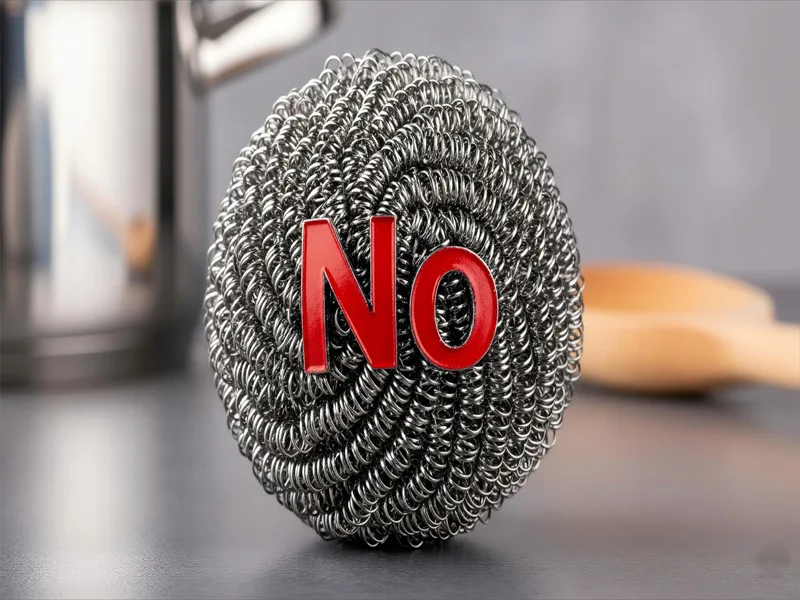
When you use hard-anodized cookware, you want to keep it in the best shape. Some actions can damage your pans or make them unsafe. Here are the main things you should avoid:
1. High Heat Cooking
Do not use high heat with hard-anodized pans. High temperatures can break down the nonstick surface and weaken the anodized layer. Use low or medium heat for most cooking. This keeps your pans safe and helps food cook evenly.
2. Metal Utensils
Avoid using metal spatulas, forks, or knives. Metal tools can scratch the surface. Although some brands claim their pans are metal-safe, scratches can still occur. Choose silicone, wood, or plastic utensils for the best results.
3. Abrasive Cleaners and Pads
Never use steel wool, scouring pads, or harsh powders. These can wear away the anodized layer and ruin the nonstick coating. Stick to soft sponges and mild dish soap.
4. Dishwasher Use
Do not put hard-anodized cookware in the dishwasher. The strong detergents and hot water can damage the surface. Always wash your pans by hand.
5. Cooking Sprays
Avoid aerosol cooking sprays. These sprays can leave a sticky film that builds up over time. The film is hard to remove and can make food stick. Use a small amount of oil or butter instead.
6. Storing Wet or Stacked
Never store your pans while they are wet. Water can cause stains or spots. Dry your cookware right after washing. If you stack your pans, place a soft cloth or paper towel between them. This prevents scratches.
7. Sudden Temperature Changes
Do not move a hot pan into cold water. Sudden temperature changes can warp the metal. Let your pan cool before washing.
8. Cooking Acidic Foods in Damaged Pans
If you see deep scratches or worn spots, stop using the pan for acidic foods like tomatoes or citrus. Acid can reach the aluminum and may cause leaching.
Tip: Always check your pans for damage before cooking. Replace any pan with a worn or peeling surface.
Here is a quick table to help you remember what to avoid:
| Action to Avoid | Why It Matters |
|---|---|
| High heat | Damages nonstick and anodized layer |
| Metal utensils | Causes scratches |
| Abrasive cleaners | Wears away protective surface |
| Dishwasher use | Weakens and stains the pan |
| Cooking sprays | Leaves sticky residue |
| Storing wet or stacked | Causes stains and scratches |
| Sudden temperature change | Warps the pan |
| Using damaged pans | Increases risk of aluminum exposure |
By avoiding these habits, you keep your hard-anodized cookware safe and long-lasting. You also protect your food and your health. Always follow these tips for the best cooking experience.
Future of Hard-Anodized Aluminum
Advances in Safety
Hard-anodized cookware will get even safer soon. Makers use new electrochemical methods to make a tough, non-reactive surface. This keeps your pans strong and hard to scratch. If you care for your pans and do not scratch them, the aluminum stays sealed away from your food.
Some brands now use titanium nonstick coatings. These coatings are six times stronger than basic ones. They help food come off the pan easily. You can cook with less oil, so your meals are healthier. Some pans have bases that stop warping. These bases spread heat evenly. You will not get hot spots that burn food or hurt your pan.
Many pans now have Thermo-Spot™ Technology. This shows you when the pan is hot enough to use. You get better results and do not overheat your pans. Some pans have cool-touch silicone handles. Many are safe to use in the oven. This makes it easier and safer to move pans from the stove to the oven.
Tip: Look for new safety features when you buy cookware. These new ideas help you cook safely and with confidence.
Trends and Research
You will see new trends in hard-anodized cookware. More people want pans that last, are safe, and easy to use. Makers now make pans that do not warp, rust, or scratch. You can find more pans that work on induction stoves and can go in the dishwasher.
People care more about healthy cooking now. Many families want pans without PTFE or PFOA. Companies now make more pans with safe, eco-friendly coatings. There is also a move to use greener materials and better ways to make pans.
Smart technology is coming to the kitchen. Some pans have temperature sensors built in. These sensors help you cook at the right heat every time. You get better food and waste less.
Online shopping makes it easy to find and buy good pans. You can see many products and read reviews from other cooks.
Here is a quick look at where the market is going:
| Aspect | Details |
|---|---|
| Market Size 2024 | USD 1.5 billion |
| Projected Size 2033 | USD 2.8 billion |
| Growth Rate | 7.5% CAGR (2026-2033) |
| Main Growth Drivers | Demand for durable, non-toxic cookware; health trends; premium products |
| Leading Segment | Residential (70% market share in 2023) |
| Fastest Growing Region | Asia Pacific |
| Key Opportunities | Product innovation, eco-friendly cookware, e-commerce, emerging markets |
Note: The future is bright for hard-anodized cookware. You will see safer, smarter, and greener pans as technology and what people want changes.
You can count on hard-anodized cookware for everyday cooking if you take care of it. The strong layer, nonstick surface, and safe materials help keep your food safe. Experts give these tips to help you use your pans the right way:
- Wash with a soft sponge and gentle soap.
- Pick wood, silicone, or plastic tools for cooking.
- Do not put pans in the dishwasher or use high heat.
- Dry your pans after you wash them.
Hard-anodized cookware does not scratch easily, spreads heat well, and does not react with food. This makes it a tough and safe pick for your kitchen in 2025.
FAQ
Yes, you can use hard-anodized cookware for all ages. The sealed surface keeps food safe. You do not need to worry about harmful chemicals or metals getting into meals.
Most hard-anodized pans do not work on induction stoves. Some brands add a magnetic base. Always check the label before you buy. Look for “induction compatible” if you need it.
No, you do not need to season hard-anodized pans. The nonstick surface works right away. You can start cooking as soon as you wash the pan.
If you see deep scratches or the coating peels, stop using the pan. Damaged pans may not protect your food. Replace the pan to keep your meals safe.
Many hard-anodized pans are oven-safe. Always check the maker’s instructions for the safe temperature. Some handles may not handle high heat.
You should use wood, silicone, or plastic utensils. Metal tools can scratch the surface. Even if the brand says “metal-safe,” gentle tools help your pan last longer.
Soak the pan in warm water. Use a soft sponge and mild soap. For tough spots, try a baking soda paste. Avoid steel wool or harsh cleaners.
Some hard-anodized pans have a PTFE nonstick coating. Always check the product label. If you want a PTFE-free pan, look for “PTFE-free” or “ceramic nonstick” on the box.





